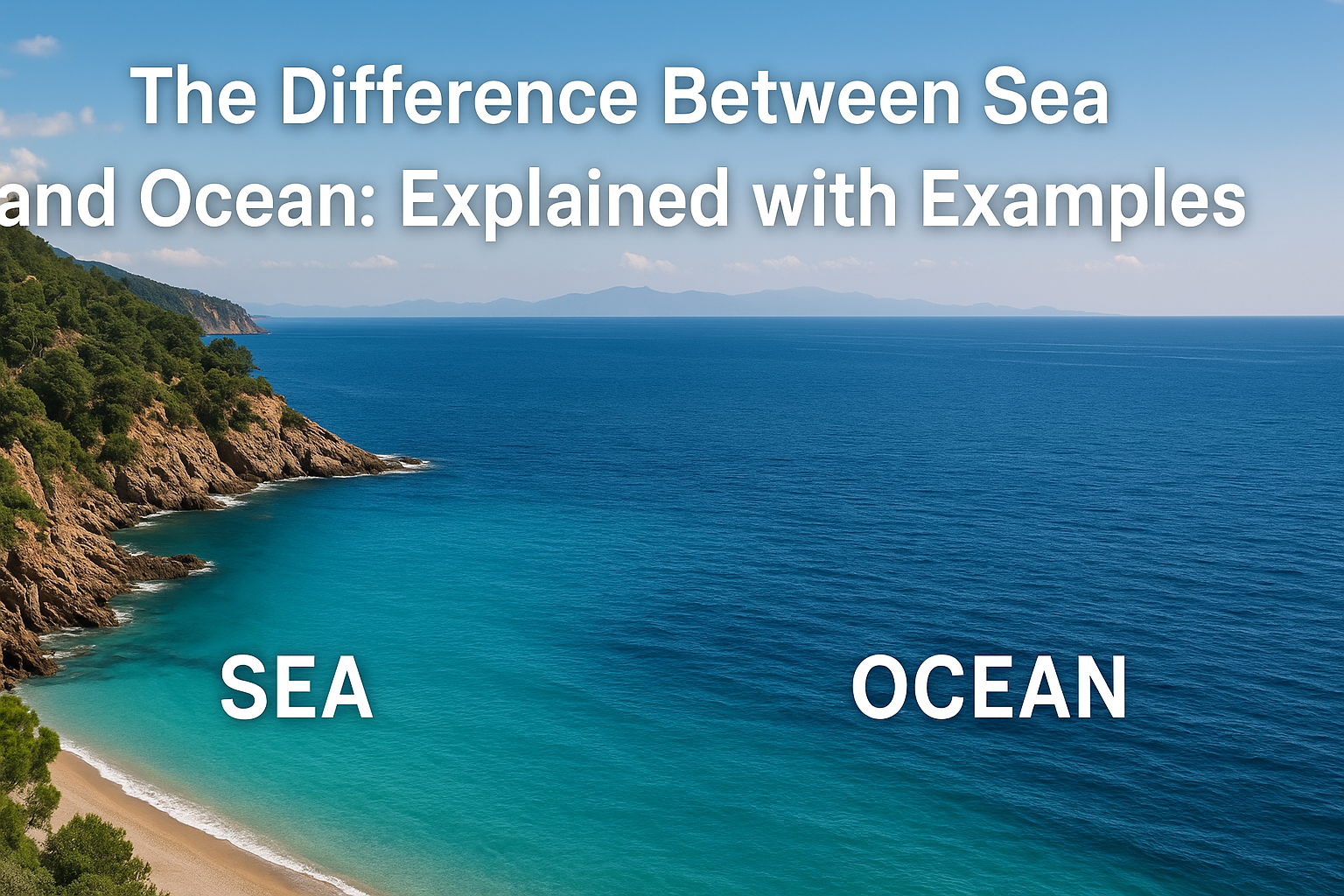When you think of the sea and the ocean, what comes to mind? Blue water stretching to the horizon? Salty waves splashing on a beach? While these images might look the same, the difference between sea and ocean runs deeper than you might expect. Let’s dive into the facts, clear the confusion, and see why it matters when you use these words.
What Is an Ocean?
An ocean is a massive body of salt water that covers about 71% of the Earth’s surface. Oceans are the largest water bodies on the planet and play a critical role in climate, ecosystems, and even global trade.
There are five major oceans:
- Pacific Ocean (the largest and deepest)
- Atlantic Ocean
- Indian Ocean
- Southern Ocean
- Arctic Ocean
Read More About This Article: Cancellation vs Cancelation: Understanding Spelling Variations in British and American English
Key Features of Oceans
| Feature | Details |
|---|---|
| Size | Very large (millions of square miles) |
| Depth | Deep (average ~12,100 feet) |
| Biodiversity | Home to vast marine life |
| Tides & Currents | Strong ocean currents and wave systems |
| Connectivity | Connect continents; global shipping routes |
What Is a Sea?
A sea is a smaller, partially enclosed body of salt water. Seas are often located where the land and ocean meet, and they are usually part of an ocean, bordered by land on several sides.
Examples of Seas
- Mediterranean Sea (bordered by Europe, Africa, and Asia)
- Baltic Sea (Northern Europe)
- Caribbean Sea (part of the Atlantic)
- Arabian Sea (part of the Indian Ocean)
Key Features of Seas
| Feature | Details |
|---|---|
| Size | Smaller than oceans |
| Depth | Shallower (average ~2,300 feet) |
| Enclosure | Partially or mostly enclosed by land |
| Ecosystem | Rich in marine biodiversity |
| Navigation | Important for regional transport & fishing |
The Core Differences Between Sea and Ocean
Here’s a quick look at how seas and oceans compare:
| Criteria | Ocean | Sea |
|---|---|---|
| Size | Largest bodies of water | Smaller, part of oceans |
| Location | Open, vast, spans across continents | Enclosed or bordered by land |
| Depth | Deep (up to 36,000+ feet) | Shallow (typically under 10,000 feet) |
| Example | Pacific Ocean | Mediterranean Sea |
| Role in Climate | Global climate regulation | Regional weather influence |
Why Does the Difference Matter?
Understanding the difference between sea and ocean isn’t just academic. It affects:
- Navigation and Shipping: Sea routes are often shorter and more sheltered.
- Marine Biology: Some species are exclusive to seas, others to oceans.
- Environmental Issues: Pollution in enclosed seas builds up faster.
- Tourism and Culture: Coastal communities often depend on sea-based economies.
A Real-World Analogy
Think of an ocean as a giant shopping mall, and the sea as one of its stores. The mall is vast, diverse, and connects many areas. But when you step into a store, you’re in a smaller, more contained space with its own unique vibe. Both are important—but they serve different functions.
Bonus: Fun Facts
- The Pacific Ocean is bigger than all land masses combined.
- The Sargasso Sea is the only sea without a coastline—it’s defined by ocean currents.
- Over 80% of the ocean is still unmapped and unexplored.
When to Use Each Word
Use “ocean” when:
- Talking about vast, deep, open water
- Referring to global systems or geography
Use “sea” when:
- Mentioning specific coastal regions
- Talking about maritime cultures or fisheries
Wrap-Up: Sea vs Ocean—Know the Difference
Next time you’re writing or speaking, don’t just use these terms interchangeably. The difference between sea and ocean matters more than most people realize. Whether you’re studying geography, planning a trip, or just curious, knowing what separates the two will help you sound sharper, smarter, and better informed.
Tip: Want to see them both? Take a cruise through the Mediterranean (a sea) that enters the Atlantic (an ocean). You’ll experience both worlds—literally!
Stay curious. The world’s waters are waiting.

